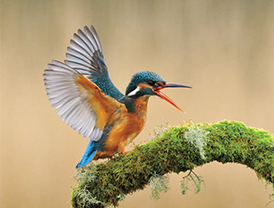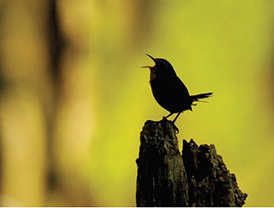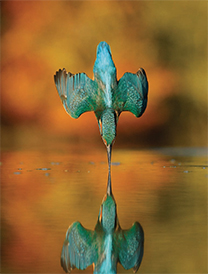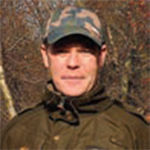 Alan McFadyen—a Scottish photographer—took up photography in 2009. He works as a supervisor in a factory, and also runs a business that specialises in renting out hides for wildlife photography. He is always on a lookout for new subjects. Recently he has started targetting difficult and iconic species for his photography pursuits. Most of the times, he is out in the countryside, searching for his next subject. He believes that there is no better job in the world other than photography. To see more of his work, visit www.scottishphotographyhides. co.uk/www.facebook.com/ scottishphotographyhides/
Alan McFadyen—a Scottish photographer—took up photography in 2009. He works as a supervisor in a factory, and also runs a business that specialises in renting out hides for wildlife photography. He is always on a lookout for new subjects. Recently he has started targetting difficult and iconic species for his photography pursuits. Most of the times, he is out in the countryside, searching for his next subject. He believes that there is no better job in the world other than photography. To see more of his work, visit www.scottishphotographyhides. co.uk/www.facebook.com/ scottishphotographyhides/
As told to Disha Khemchandani
Your famous picture of a diving kingfisher (Page no. 56) has truy justified that every picture has a story to tell. What were your thoughts, when after putting in nearly 4200 hours, you got the perfect picture?
Well a lot of relief as you can imagine. I remember looking at the back of the camera and thinking that this could be it. However, you never know until you see the pictures on the computer. I was very happy when I got home and saw the photographs. On the other side, I was disappointed that the challenge was over, which might sound strange to most people.
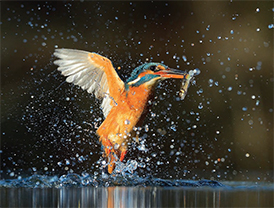
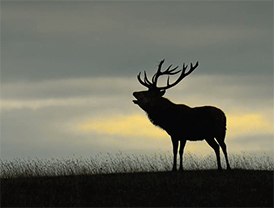
Do you believe that to create an interesting picture, photographers can rely on software? How do you ensure that your pictures stand out from the rest?
Believe it or not when i took this photograph, I did not have any well known software. I used free programs like Nikon NX view, which I used for cropping, exposure and a little sharpening. This is the case with the famous Kingfisher photograph. I have no problems with people using software so long as it is used for subtle changes only.
What has been your motivation for pursuing photography?
My motivation has come from my late grandfather. When I was five years old, he would take me for birdwatching, exploring the countryside and teaching me about nature. I will never forget the day when he showed me my first ever kingfisher. I saw a blue flash like a bullet shooting up the river. From the very same spot, I took this photograph.
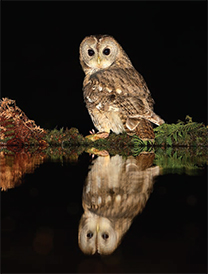
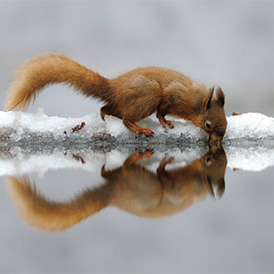
Of all the wildlife photography shoots that you have done, which one has been the most memorable one? Why?
It has to be the Kingfisher photo shoot. The amount of time and effort that went into the project and all the emotions that came through the journey would be hard to believe and describe. The reaction from all across the globe to the photograph has added to the experience, and made every second worth the effort.
Name some photographers who have influenced you.
Funnily enough I haven’t really been influenced by renowned photographers. Like I said, my grandfather, who was not a photographer, has been my biggest influence.
According to you, what is the key to creating the perfect wildlife picture?
There isn’t one key to open a door for the perfect photograph. You really need a lot of different things to come together. The most important factors are preparation, patience and presence of mind to change things if you are not getting the required result. Most nights before going to sleep, I usually think of ways of how I can improve the shot that I am visualising. Finally a big factor is something we all need, and that is luck. Always remember like everything in life, the more you put in the more you will get out.
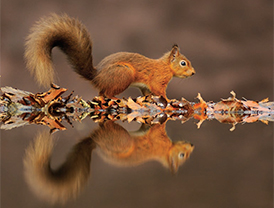
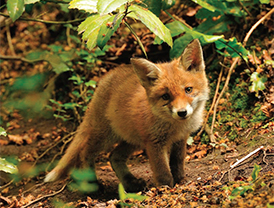
How do you generally plan a wildlife shoot?
Planning is extremely important. When I choose a new subject, a lot of work is done before a single shot is taken. Firstly I need to find an area where I will have a good chance of finding a particular subject. My 40 plus years as a naturalist saves a lot of time as I can understand if it is the correct habitat. I explore the area closely looking for sites that offer a clean backdrop and with good lighting. The next stage is to begin a feeding campaign. With most species, this is the single mostimportant thing to make life easy. It is also important to feed regularly as once a bird or animal learns of an easy food source, it will return on a daily basis. Once the subjects are showing up, I build a hide and then begins the photography. For some subjects, this can take a few weeks from start to finish, but for others it can take months. To give an example, I have been working on getting a picture of a Pine Marten for 8 months now, and I still have to try the hideout. A lot of work for nothing so far, but I am confident that it will be worth it in the end.
Which animal or bird is on your wildlife photography wish list?
As said the Pine Marten is on top of my list at the moment. It is so rare in Southern Scotland. My area has about 300 square miles of forest with an estimated 20 animals, so it will not be easy. I think photographing a Goshawk will be next on my wish list, which is another extremely tough challenge.
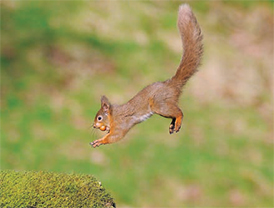
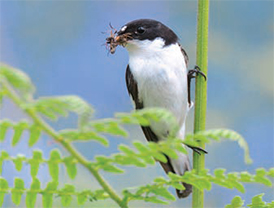
According to you, how can wildlife photography succeed in changing people’s outlook towards endangered animals?
I am sure it can. Photographs are a very powerful tool and can send out a strong message on how some humans are destroying such beautiful creatures. My fear is will they change things enough? It seems in the world we live in, money is king, which is very tragic.
What would you like to advise budding wildlife photographers?
Learn about your subject, think deeply about things and do not expect great results straight away. Be patient, work hard and you will be rewarded. The internet is a fantastic tool. Magazines such as this are helpful resources that will teach budding wildlife photographers to cut a lot of corners. |SP
